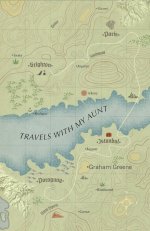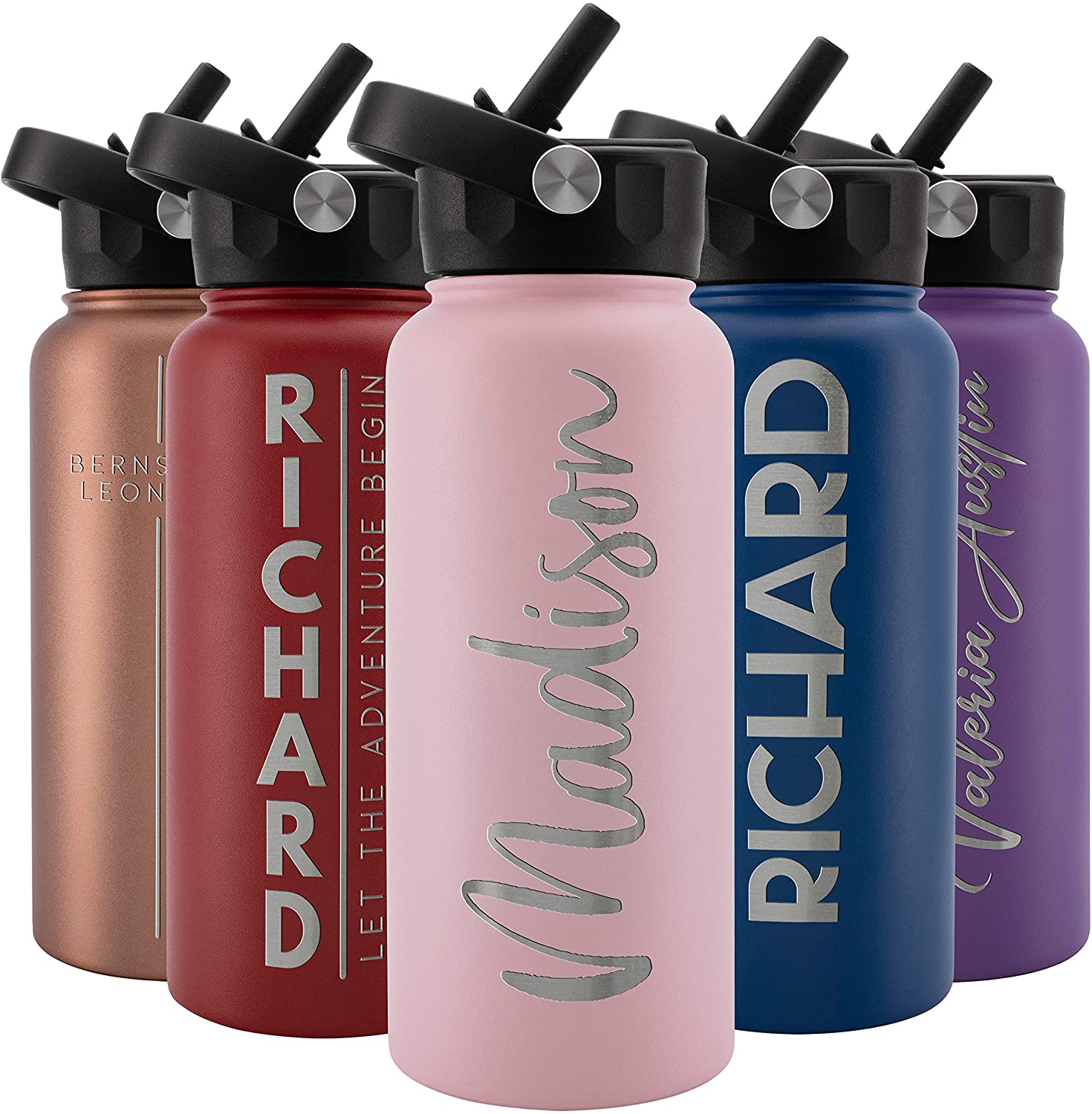What Is Xian
Famous For?
If you're wondering - "What is Xian famous for", it is where the Terra Cotta army was discovered. Correctly spelled "Xi'an", read about this amazing story in China.
The Qin Dynasty Terra-cotta Warriors are just a part of a larger story, the story of China’s first emperor, Emperor QinShihuang.
The first Emperor unified China, established a centralized state, and put an end to the former feudal system. He standardized weights and measures, as well as monetary, legal and writing systems. He also connected individual protective walls into the Great Wall of China.
Amazing achievements in such a huge country!
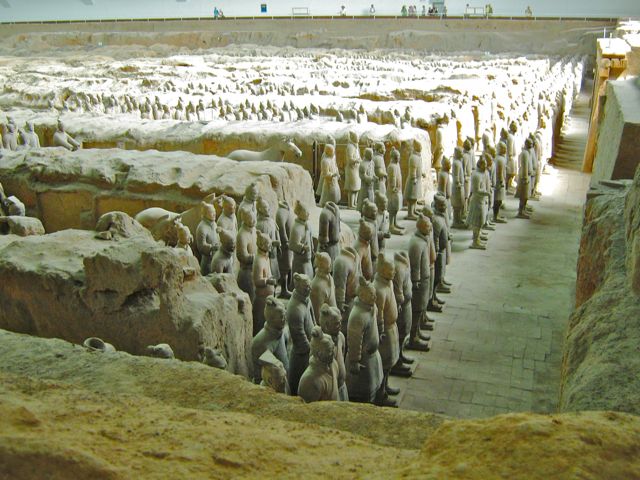
Chinese history records that as soon as an emperor ascended the throne, he began the construction of his tomb.
Emperor QinShihuang went beyond that; he created a massive subterranean palace with a protective outer wall with watchtowers and gates leading in four directions.
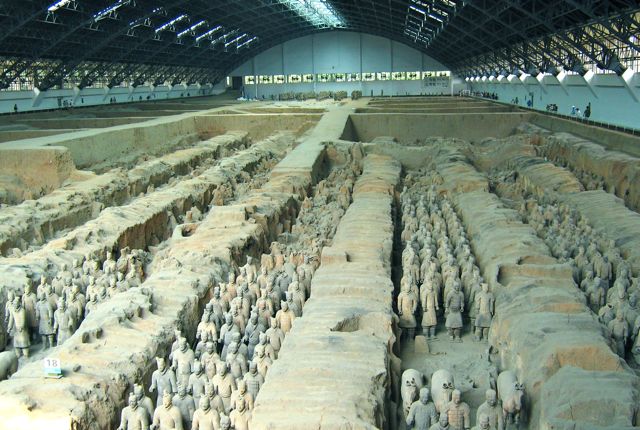
And, of course, a life-size army of thousands, arranged in battle formation and armed with spears, halberds, cross-bows, swords and Pi (a bayonet-like weapon) to guard the palace. He believed that life under the ground after death would be a continuation of life on earth.
Emperor QinShihuang’s craftsmen and slave labor took several decades to build everything we see today, but even then, not all his plans were completed.
What is Xian Famous For?
Xi’an, the capital of China’s Shaanxi province, as one of the four great
ancient capitals, is one of the oldest cities in China. It’s name means
“perpetual peace.” The correct spelling is Xi'an, but in the modern-day West it is usually referred to simply as "Xian".
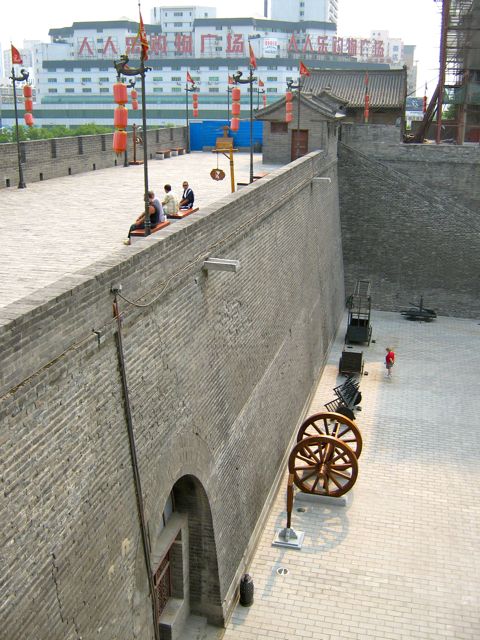 The ancient wall guarding the old city.
The ancient wall guarding the old city.What Is Xian Famous For?
Xian was also the original starting point of the ancient trading route known as the Silk Road. Today Xian is a mega-city of more than six million people, and it is a business, cultural and educational center that hosts international events.
The Terra-cotta Warriors, the top archaeological find of the 20th century, put Xian on the map as one of the world’s top cultural tourist destinations. The site was discovered by accident.
It was on March 29, 1974, that farmers from nearby XiYang village were drilling in
several locations in a search for water. They didn't discover much water, BUT they discovered pottery fragments
and ancient bronze weapons. They realized that they may have stumbled across something of ancient significance.
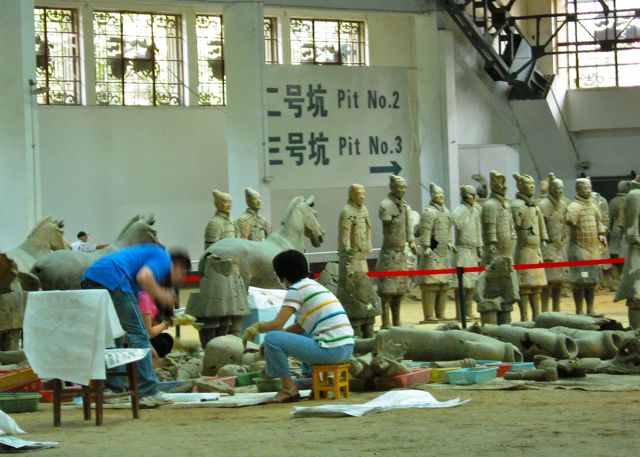 Archeologists working diligently in one of the covered excavation pits.
Archeologists working diligently in one of the covered excavation pits.Immediately the head of the village reported the findings to the local government, and on July 17, a Shaanxi Province archeological team sanctioned by the National Historical and Cultural Relics Administration arrived to begin exploration and excavation.
What is Xian Famous For?
During my exploration visit to today’s Terra-cotta Museum, one of the farmers who found the pit was signing souvenir coffee-table books. Naturally, I had to buy one. He gracefully autographed his name with a Chinese brush pen.
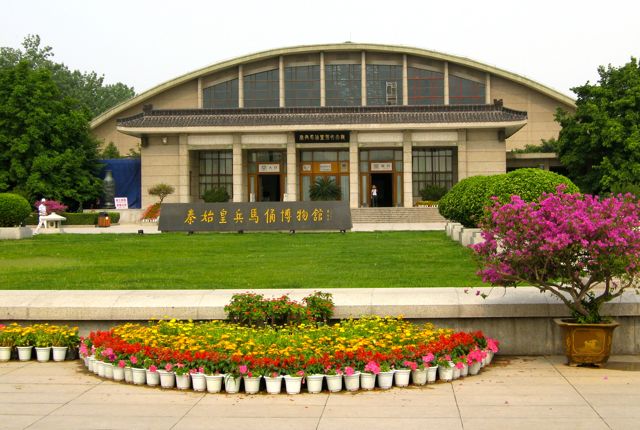 The Terra-cotta Museum
The Terra-cotta MuseumOn the east side of Emperor QinShihuang’s mausoleum is the Terra-cotta Museum. There are three main buildings covering the current three excavation pits. The entire complex occupies 20 hectares.
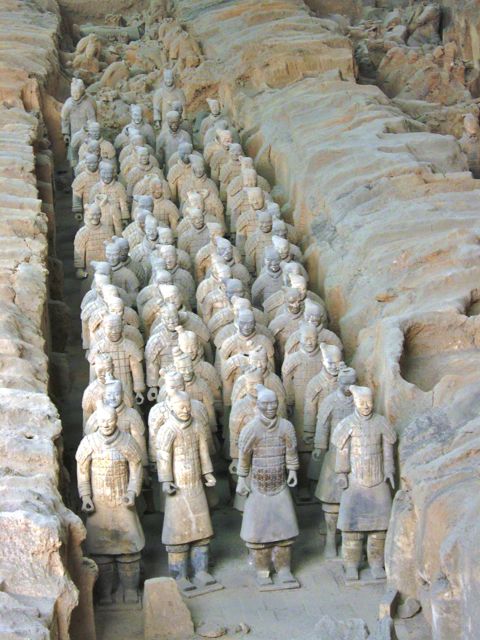
To date, about 1,800 statues have been excavated. Yet most of the complex is still covered , and it’s believed that more than 8,000 pottery warriors, mostly infantrymen, and horses will be unearthed. And innumerable valuable cultural relics remain to be discovered.
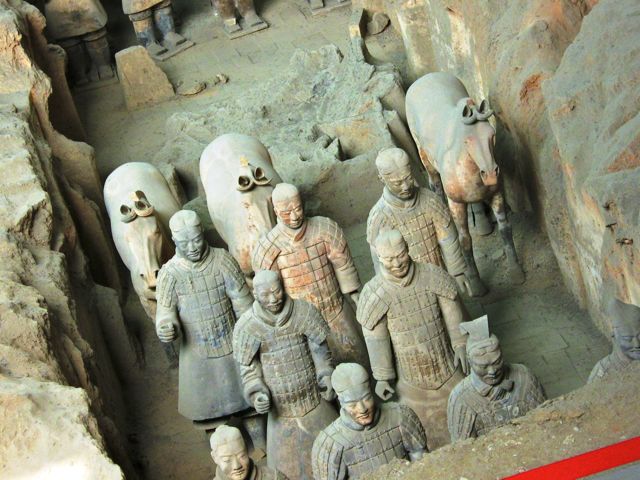 Terra cotta warriors at Xian museum
Terra cotta warriors at Xian museumA remarkable discovery is that no two of these life-size
warriors have the same facial features. It is thought that real soldiers posed
for each individual statue. And these guys were tall by historic
comparison - they average 5’ 10” tall. (175cm).
Each was composed of local clay, fired into ceramics that were then colorfully painted. Unfortunately time has eroded most of the colors, but they are still visible on some of the figures. And it's not just warriors - 2 pits contain life-size painted bronze chariots with four horses!
What maddened archeologists for years was the quick eroding of the colors once the pieces were excavated and exposed to fresh air and bright light. Recently, with the cooperation of German archeological experts, a coating was developed that, when immediately applied to an unearthed object, can keep the original paint from fading and flaking after exposure to air and light.
In order to keep the location of Emperor QinShihuang’s mausoleum and underground palace a secret, his son ordered thousands of officials to be killed and thousands of craftsmen to be buried alive.
Certainly, this place must be haunted!
Emperor QinShihuang himself was obsessed with a fear of death and expended a lot of resources in his search for immortality. Still, he died at 50.
Though his Qin dynasty only lasted 15 years, it laid the foundation and greatly influenced the success of future dynasties.
What is Xian Famous For?
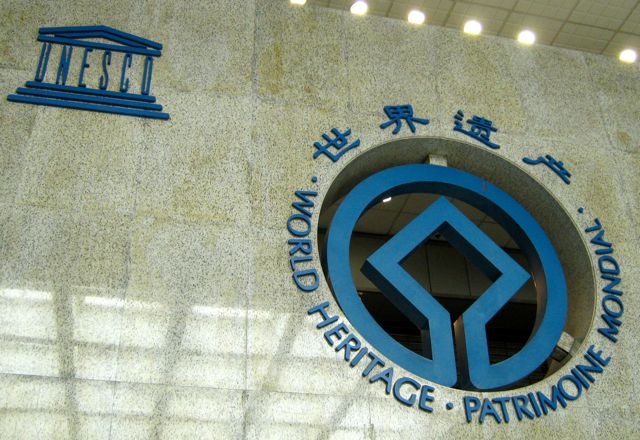 A UNESCO World Heritage Site
A UNESCO World Heritage SiteOn October 1, 1979, the Terra-cotta Museum opened to the public. In the last 20 years it’s become the largest on-site museum in China.
In 1987 this historic and scenic area outside Xi’an city was designated by UNESCO as a World Heritage Site.
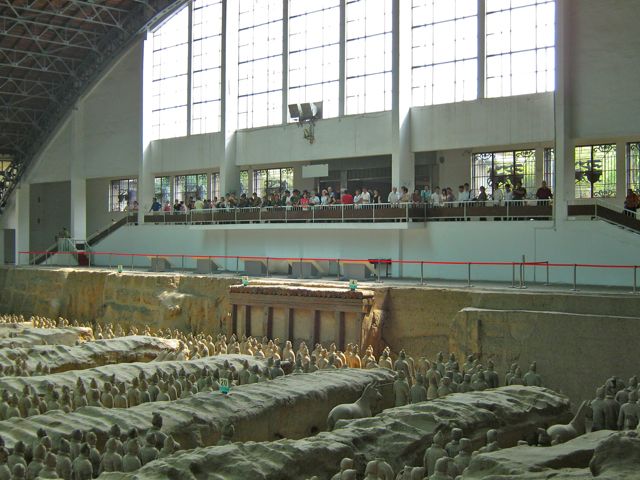
A huge, arch-domed steel structure, located at the center of the museum covers Pit One. Two million tourists now visit annually, and 50 million have visited since the museum opened in 1979.
 "The Actual Site Special Photo Service" Not sure what this guy does, but he looks important.
"The Actual Site Special Photo Service" Not sure what this guy does, but he looks important.Tomorrow’s A to Z Blog Challenge: For the letter Y, I’m going to tell you about my experience teaching an English class on a Yangtze River cruise.
Carolyn V. Hamilton




